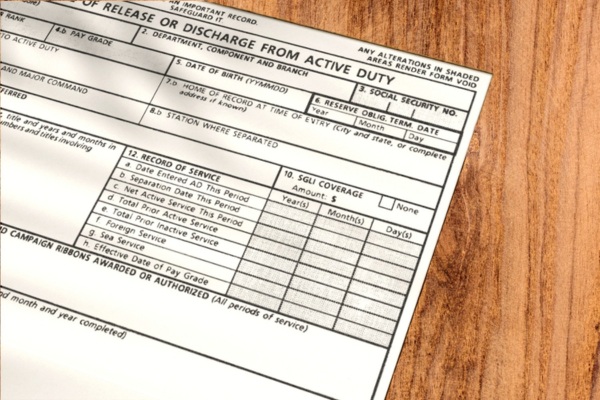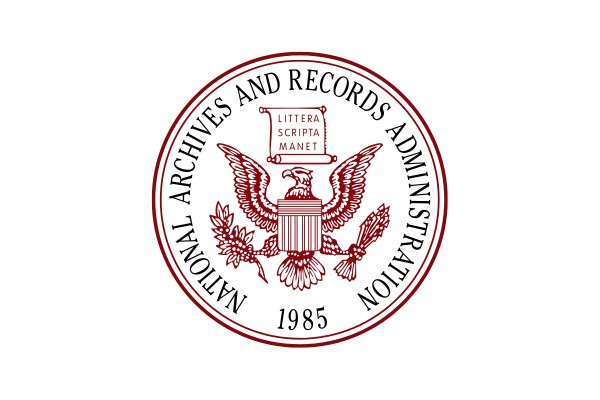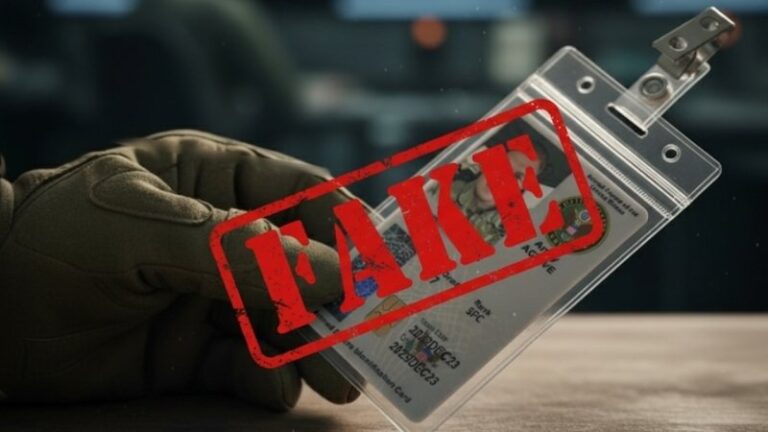How to Find Out Military Discharge Status: A Complete Guide
Discharge status is more than a simple entry in a military file. It can decide whether a veteran qualifies for healthcare, housing assistance, or even job opportunities after service. Employers may need it during background checks, attorneys may require it for legal proceedings, and families often rely on it to secure veterans’ benefits or burial honors.
Because the type of discharge reflects a service member’s history, it directly shapes access to resources offered through the VA and other agencies. From honorable to dishonorable, each classification carries weight long after active duty ends.
In this guide, you’ll learn where discharge records are stored, how requests are processed, and what documents hold the answers. Keep reading to discover how to find out military discharge status and why it plays such an important role in securing rights and benefits.
Contents
Key Document: DD Form 214

The most important record when verifying discharge status is the DD Form 214, formally known as the Certificate of Release or Discharge from Active Duty. Every service member receives this document when separating from the military, whether through retirement, completion of service, or early discharge.
The DD214 provides a complete snapshot of a person’s military service. It lists the dates they served, the branch they belonged to, the awards and medals earned, and their training or specialties.
What makes it especially critical is the section that records the character of discharge, such as honorable, general, other than honorable, bad conduct, or dishonorable. This single detail often decides whether a veteran is eligible for VA healthcare, tuition assistance, or employment preference programs.
Without this certificate, it becomes nearly impossible to claim benefits or prove military history. Employers, attorneys, and even funeral homes rely on it to confirm eligibility for veterans’ benefits. For example, a law firm reviewing a client’s case may request the DD214 to prove honorable service before pursuing SCRA protections. Families can also use it when arranging military burial honors or applying for survivor benefits.
Every veteran should keep their DD214 safe, but if the document is lost, replacement copies can be requested from the National Personnel Records Center or through the National Archives.
Where to Request Military Discharge Records?
National Archives and Records Administration (NARA)

The National Archives and Records Administration (NARA) is the official repository for records of former service members from the Army, Navy, Air Force, Marine Corps, and Coast Guard. Anyone needing to confirm a veteran’s military status or discharge will likely need to work with this agency.
There are two main ways to submit a request:
- Online: Through the eVetRecs portal at archives.gov
- By mail or fax: By completing and sending Standard Form 180 (SF-180) to the appropriate address.
Access is limited to veterans and their next of kin, such as a spouse, parent, child, or sibling. These groups can request records without charge, which makes the process accessible for families needing proof of service.
In addition, requests can sometimes be used to obtain replacement medals or certificates tied to a veteran’s service.
It is important to plan ahead because record retrieval can take time. Requests often take several weeks, depending on the volume received by NARA. For example, older files dating back to World War II may require additional processing, while more recent military service records are often retrieved more quickly.
Department of Defense or Branch Personnel Commands
When a service member has been discharged recently, their official military personnel file may not yet have been transferred to the National Archives. Instead, these records often remain with the branch-specific personnel command or the Department of Defense. This is particularly common for discharges that occurred within the past decade.
Each branch has its own records office, such as:
- Air Force Personnel Center
- Navy Personnel Command
- Army Human Resources Command
- Marine Corps Manpower Management Records and Performance Branch
- Coast Guard Personnel Service Center
Requesting records directly from these offices can sometimes be quicker than waiting on the National Archives. For example, if a veteran left active duty only five years ago, the branch command may still have immediate access to the DD Form 214 and related service records.
This approach is especially useful for attorneys or employers who need confirmation of discharge status without long delays.
Veteran’s Own Records
Every service member receives a copy of their DD Form 214 at the time of discharge. For many veterans, this document remains the most direct way to verify military status or provide proof of discharge when applying for benefits, seeking employment, or requesting housing assistance.
Having the certificate on hand can save considerable time compared to filing an external records request.
If the original DD214 has been lost or damaged, replacement copies can be obtained through the National Archives or, in the case of more recent military service, from the veteran’s branch personnel office. The process generally requires submitting a records request with identifying information, such as dates of service and branch affiliation.
Many veterans take the practical step of keeping multiple certified copies of their DD214 in secure locations. For example, one copy may be placed in a fireproof safe at home while another is held by a trusted family member or attorney.
Ways to Verify Military Discharge Status

Veteran Self-Verification with DD Form 214
For most veterans, the simplest way to confirm their discharge status is by presenting their DD Form 214. This certificate is issued at the time of separation and remains the primary proof of military service.
Because it lists the dates of service, branch affiliation, and character of discharge, it is accepted across government agencies, employers, and legal institutions.
Only certified copies of the DD214 are valid for official purposes. For example, when applying for a VA home loan or seeking employment with veteran’s preference, agencies will require a certified true copy. Photocopies without certification are often rejected since they do not carry the same level of authenticity.
If a DD214 is lost, damaged, or incomplete, veterans can file a records request through the National Archives or the relevant branch personnel command to obtain a replacement. This process can take time, so it is best to prepare ahead of any deadlines involving benefits, legal filings, or job applications.
A practical safeguard is to maintain several certified copies in different secure places. A veteran might keep one at home, another with a trusted family member, and a third with an attorney handling benefits or estate planning. Having multiple copies ensures quick access when proof of military discharge is required.
Employer or Authorized Third-Party Verification
In many situations, discharge status must be confirmed by someone other than the veteran. Employers may request it when applying veteran preference in hiring, attorneys often require it for legal proceedings, and landlords sometimes ask for verification before finalizing a lease agreement.
Under the Privacy Act of 1974, written consent from the veteran is mandatory before any third party can access official military personnel records. Attempting to obtain these files without consent can lead to legal consequences, including penalties for unauthorized access.
The verification process generally follows one of two paths:
- The third party requests a certified DD214 directly from the veteran.
- With signed consent, they submit Standard Form 180 to the National Archives or the relevant branch personnel command. This form can be mailed or faxed to the appropriate address.
It is important to understand the limitations. Without proper authorization, only basic service verification, such as dates of service or branch affiliation, may be provided. Details like the character of discharge remain restricted.
For example, if a law firm is handling a case that hinges on eligibility for veterans’ benefits, it must first secure written permission from the client before requesting the DD214. This step protects both the veteran’s privacy and the firm’s compliance with federal law.
Defense Manpower Data Center (DMDC) Verification

The Department of Defense maintains a secure database through the Defense Manpower Data Center (DMDC) that serves as an official source for verifying military status. Organizations that must comply with the Servicemembers Civil Relief Act (SCRA) widely rely on this system.
Through the DMDC, authorized users can confirm whether an individual is currently on active duty or has served in the Reserve. In some cases, limited discharge data may also be available, but the database is primarily designed to verify active or recent military service rather than provide full separation documents.
Access to DMDC records is strictly controlled. Only organizations with approved login credentials, such as lenders, landlords, or attorneys, can perform searches. For example, a mortgage lender may use the system to verify that a borrower is entitled to SCRA protections before finalizing loan terms.
While the DMDC is considered a reliable government resource, it is not always user-friendly. The technical nature of the system and its restrictions on access often make it challenging for institutions to navigate. For this reason, many organizations turn to third-party verification services that connect directly with DMDC data but deliver results in a faster and more practical format.
Military Verification Companies
Private firms such as MilitaryVerification provide a faster and more practical alternative to government requests. By connecting directly with Department of Defense databases, these services verify active duty or recent military service without the delays that often come with the National Archives or branch-level requests.
One of the major advantages is speed. While record requests through the National Personnel Records Center can take weeks, military verification companies often return results within a few days.
The reports they provide are designed to meet legal standards, making them admissible in court when required. They also reduce the risk of errors caused by incomplete forms or incorrect addresses, which can delay or even prevent a successful records request.
The applications for these services are wide-ranging. Employers can quickly confirm veteran status when applying preference points during hiring. Attorneys rely on them when submitting military service proof in court proceedings.
Landlords use them to confirm whether a tenant qualifies for protections under the Servicemembers Civil Relief Act.
Outsourcing verification ensures compliance with federal requirements while saving time for organizations that cannot afford to wait weeks for confirmation. For law firms, lenders, and companies managing high volumes of cases, a trusted verification partner provides both efficiency and peace of mind.
Key Factors to Keep in Mind When Verifying Discharge Status
Required Identifying Information for Record Requests
Successful record retrieval depends on providing accurate personal details. Agencies that handle service records cannot locate a veteran’s file without the right identifiers, and even small errors can create long delays.
Before submitting a records request, it is important to have the following information ready:
- Full legal name, including any variations or maiden names.
- Date of birth.
- Branch of service.
- Service number or Social Security number.
- Approximate dates of service, including start and end years.
Missing or incorrect data can cause requests to stall for weeks or result in outright denial. For example, a mismatch between a middle initial on the form and the official military personnel file may prevent the National Personnel Records Center from releasing the document.
Double-checking spellings, dates, and numbers before submitting a request helps avoid unnecessary setbacks and ensures the records are processed as smoothly as possible.
Discharge Upgrades and Corrections Through Review Boards
The character of a veteran’s discharge has lasting consequences. It not only reflects their military service but also determines access to important benefits, including VA healthcare, education assistance, and housing support.
Veterans with a General or Other Than Honorable discharge may find that many of these opportunities are restricted, which is why discharge upgrades play such a critical role.
Two main processes are available for veterans seeking a change.
- Discharge Review Boards (DRB): These boards review applications to upgrade the character of service if filed within 15 years of separation.
- Boards for Correction of Military Records (BCMR): When more than 15 years have passed, veterans may request corrections or upgrades through these boards, which also handle clerical errors and injustices.
For example, a veteran discharged under Other Than Honorable conditions for minor misconduct might seek an upgrade to General if new evidence demonstrates mitigating circumstances. Similarly, if a DD Form 214 lists the wrong dates of service or omits awards, those errors can be corrected through a BCMR application.
It is important to recognize that upgrades are not automatically granted. Review boards require compelling evidence and well-documented support. Strong applications often include medical records, witness statements, or legal documents that establish why a correction is justified.
Veterans should be prepared for a detailed review process that weighs both their service history and the evidence presented.
Understanding Who Has Access to Military Discharge Records
Not everyone is allowed to review or request a veteran’s discharge records. Access is carefully regulated to protect sensitive personal information, and the rules depend on who is making the request.
- Veterans themselves: Service members have the full right to their DD214 and can request as many certified copies as needed. Many veterans keep extras for use in employment, legal, or benefit applications.
- Next of kin: Parents, children, siblings, or surviving spouses may request records if the veteran has died. Proof of relationship, such as a birth certificate, marriage certificate, or death certificate, is required.
- Third parties: Employers, landlords, and attorneys may only access discharge information with the veteran’s written consent or through a legal order. Without this, they are limited to basic service verification.
These rules are grounded in the Privacy Act of 1974 and the Freedom of Information Act, both of which set strict boundaries around military records. For example, an employer cannot pull a DD214 independently without signed authorization from the veteran. Attempting to do so violates federal law and can result in penalties.
Final Thoughts on Verifying Military Discharge Status
Verifying a veteran’s discharge status is about more than finding a line on a document; it is about protecting access to the benefits, protections, and recognition earned through service. The DD Form 214 stands at the center of this process.
Whether obtained directly from the veteran, through the National Archives, or a branch personnel office, it remains the document that carries the most authority.
Employers, landlords, and attorneys should approach verification with care, ensuring written consent is secured before requesting records. Veterans, on the other hand, can safeguard their future by keeping certified copies available and correcting errors through review boards if needed.
Military verification services provide speed and convenience for confirming eligibility under the Servicemembers Civil Relief Act, but the DD214 remains the definitive source when full discharge details are required.






